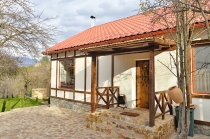
Marriott Tsaghkadzor
The hotel complex "Marriott Tsaghkadzor" offers a comfortable stay in the fresh air of Tsaghkadzor,...
Golden Palace Resort
"Golden Palace Resort-Spa" is the only officially recognized 5-star hotel in Tsakhkadzor, in...
Elegant
Elegant" hotel has stylish rooms where the guests can enjoy picturesque view of mountains and...
Villa Jrhogher
"Villa Jrhogher" is situated in the heart of Dilijan’s forests and is a perfect choice for a small group of friends, colleagues or family members to host up to 10 guests. Free private parking...India
| Capital | Delhi |
| Area | 3 287 590 km² |
| Population | 1,1 billion people |
| Official language | Hindi and English |
| Currency | Indian Rupee |
| Climate | summer +35°C winter +25°C |
| Recommended type of holiday | beach vacation (Goa) sightseeing (Delhi, South India) |
About coutnry
India, the major portion of the Indian subcontinent, lies atop the Indian tectonic plate, a minor plate within the Indo-Australian Plate. India's defining geological processes commenced seventy five million years ago when the Indian subcontinent, then part of the southern supercontinent Gondwana, began a northeastwards drift—lasting fifty million years—across the then unformed Indian Ocean. The subcontinent's subsequent collision with the Eurasian Plate and subduction under it gave rise to the Himalayas, the planet's highest mountains, which abut India in the north and the north-east. The former seabed immediately south of the emerging Himalayas, plate movement created a vast trough which, having gradually been filled with river-borne sediment, now forms the Indo-Gangetic Plain. To the west lies the Thar Desert, which is cut off by the Aravalli Range.
Sightseeing
The largest democracy in the world, India, is also home to the oldest civilization in the world, that is the Indus valley civilization. It is land of variations, where you can find diversity in landscape, climate, appearance, food, clothing, language, religion, culture and tradition. This makes India an interesting place to spend your vacations. First to the North, we have beautiful and snow clad Kashmir, Himachal Pradesh and Uttaranchal which are at the foot of Himalayas. Western region of India, has states like Rajasthan, Punjab and Gujarat famous for their forts, palaces, havelis and Gurudwaras. The eastern region has Assam, Sikkim and other states, equally beautiful and famous for Buddhist Monasteries. The central India has Maharashtra and Mahya Pradesh, famous for their caves and temples. The southern region has states like Kerala, Karnataka, Tamil Nadu and Andhra Pradesh, famous for their beaches, hill stations, backwaters, temples, churches and mosques. Not to forget Goa, a small state in India, which is a major attraction for foreign tourists. There is too much to see in India to speak of in this brief introduction.
Traditions
Namaskar or Namaste is the most popular form of greeting in India. It is a general salutation that is used to welcome somebody and also for bidding farewell. While doing namaskar, both the palms are placed together and raised below the face to greet a person.
Tilak is a ritual mark on the forehead. It can be put in many forms as a sign of blessing , greeting or auspiciousness. The tilak is usually made out of a red vermilion paste which is a mixture of turmeric, alum, iodine, camphor, etc. It can also be of a sandalwood paste blended with musk.
A bindi is an auspicious mark worn by young girls and women . Bindi is derived from bindu, the Sanskrit word for dot . It is usually a red dot made with vermilion powder which is worn by women between their eyebrows on their forehead.
Is a necklace made of black beads, worn only by the married women as a mark of being married. It is the Indian equivalent of the western wedding ring.
Cuisine



.jpg&width=401&height=258)




.jpg&width=159&height=120)
.jpg&width=160&height=120)



.jpg&width=190&height=120)
.jpg&width=130&height=120)
